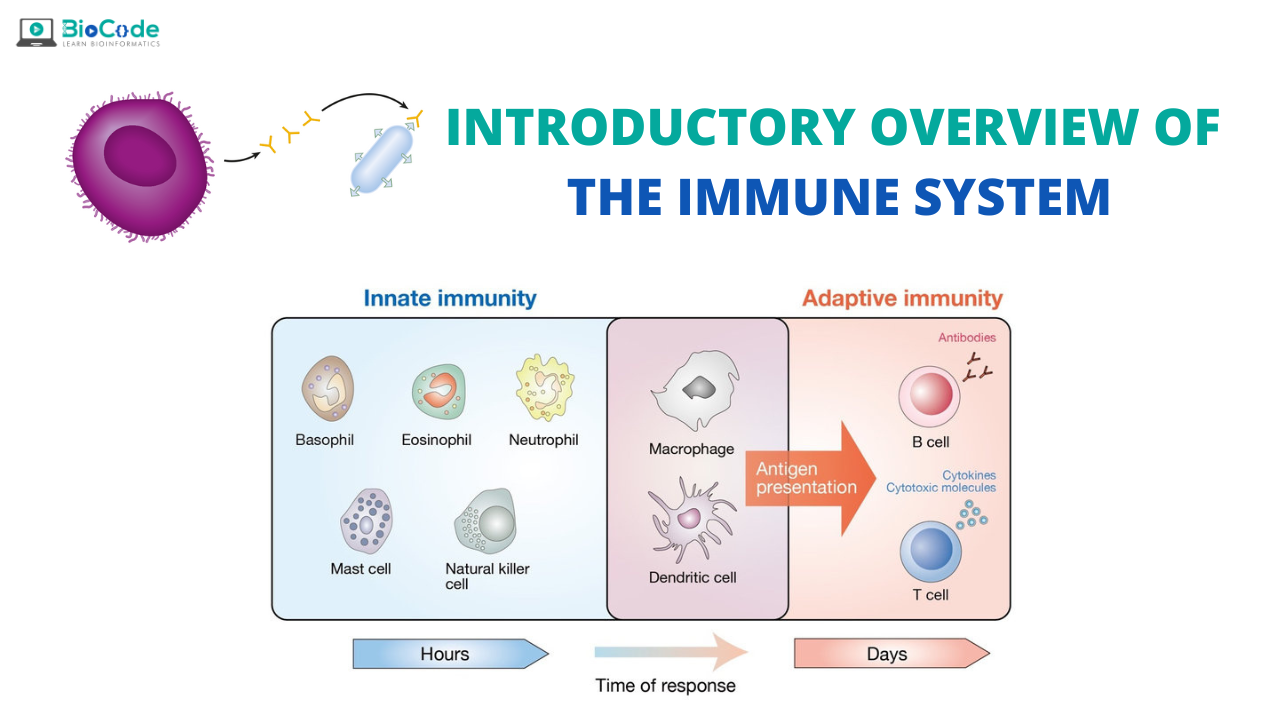Overview of Immune Responses to Microbes
⦁ Early Innate Immune Response to Microbes
⦁ Adaptive Immune Response
⦁ Initiation of Adaptive Immune Response
⦁ Capture and Display of Microbial Antigens
⦁ Cell-Mediated Immunity: Activation of T Lymphocytes and Elimination of Cell-Associated Microbes
⦁ Humoral Immunity: Activation of B Lymphocytes and Elimination of Extracellular Microbes
Early Innate Immune Response to Microbes
The innate immune system is always ready, rapidly responds, and attempts to eliminate the invaders. Innate immune system deals with microbes by inducing inflammation and by antiviral mechanisms. Inflammation is triggered by all classes of microbes. It recruits circulating blood leukocytes (e.g., phagocytes and lymphocytes) and various plasma proteins (e.g., complement, antibodies, fibrinogen) to sites of infection. They function to destroy the microbes and repair damaged tissue. System populates all tissues with sentinel cells, including macrophages, dendritic cells, and mast cells. They express many different cells surface and intracellular molecules that recognize thousands of common features of different classes of microbes
Adaptive Immune Response
Secreted antibodies bind to extracellular microbes. It blocks their ability to infect host cells and promote their ingestion and subsequent destruction by phagocytes. Phagocytes ingest microbes and kill them. Helper T cells enhance the microbicidal abilities of the phagocytes. Helper T cells recruit leukocytes to destroy microbes and enhance epithelial barrier function to prevent the entry of microbes. Cytotoxic T lymphocytes kill cells infected by microbes
Initiation of Adaptive Immune Response
The adaptive immune system generates and maintains a diverse repertoire of clones of naive B and T lymphocytes. These clones have millions of different specificities for microbial antigens, and all these different clones develop prior to exposure to the antigens. The lymphocyte responds by proliferating to produce tens of thousands of effector lymphocytes with the identical specificity that can eliminate the microbial infection.
Capture and Display of Microbial Antigens
Protein antigens are captured by dendritic cells residing in these epithelia, and the cell-bound antigens are transported to draining lymph nodes. Microbial protein antigens are processed in the dendritic cells to generate peptides that are displayed on the cell surface bound to MHC molecules. Naive T cells recognize these peptide-MHC complexes, and this is the first step in the initiation of T cell responses. Polysaccharides and other non-protein antigens are captured in the lymphoid organs and are recognized by B lymphocytes but not by T cells.
Cell-Mediated Immunity: Activation of T Lymphocytes and Elimination of Cell-Associated Microbes
When naive T cells are activated by antigen and costimulators in lymphoid organs, they secrete cytokines that function as growth factors and respond to other cytokines secreted by dendritic cells. The combination of signals (antigen and cytokines) stimulates the proliferation of the T cells and their differentiation into effector T cells. These effector cells are reactivated by antigen at sites of infection and perform the functions responsible for elimination of the microbes. T helper cells and Cytotoxic T cells help in microbial elimination.
Humoral Immunity: Activation of B Lymphocytes and Elimination of Extracellular Microbes
On activation, B lymphocytes proliferate and then differentiate into plasma cells that secrete different classes of antibodies with distinct function. Protein antigens are typically folded and do not contain multiple identical epitopes. They are not able to simultaneously bind to many antigen receptors, and the full response of B cells to protein antigens requires help from CD4+ T cells. B cells ingest protein antigens, degrade them, and display peptides bound to MHC molecules for recognition by and activation of helper T cells. The helper T cells then express cytokines and cell surface proteins, which work together to activate the B cells. The humoral immune response defends against microbes in many ways. Antibodies bind to microbes and prevent them from infecting cells, thereby neutralizing the microbes.
Decline of Immune Responses and Immunologic Memory The majority of effector lymph
Most effector lymphocytes induced by an infectious pathogen die by apoptosis after the microbe is eliminated. which return the immune system to its basal resting state, called homeostasis. This occurs because microbes provide essential stimuli for lymphocyte survival and activation, and effector cells are short-lived. As the stimuli are eliminated, the activated lymphocytes are no longer kept alive. The initial activation of lymphocytes generates long-lived memory cells, which may survive for years after the infection and mount rapid and robust responses to a repeat encounter with the antigen

